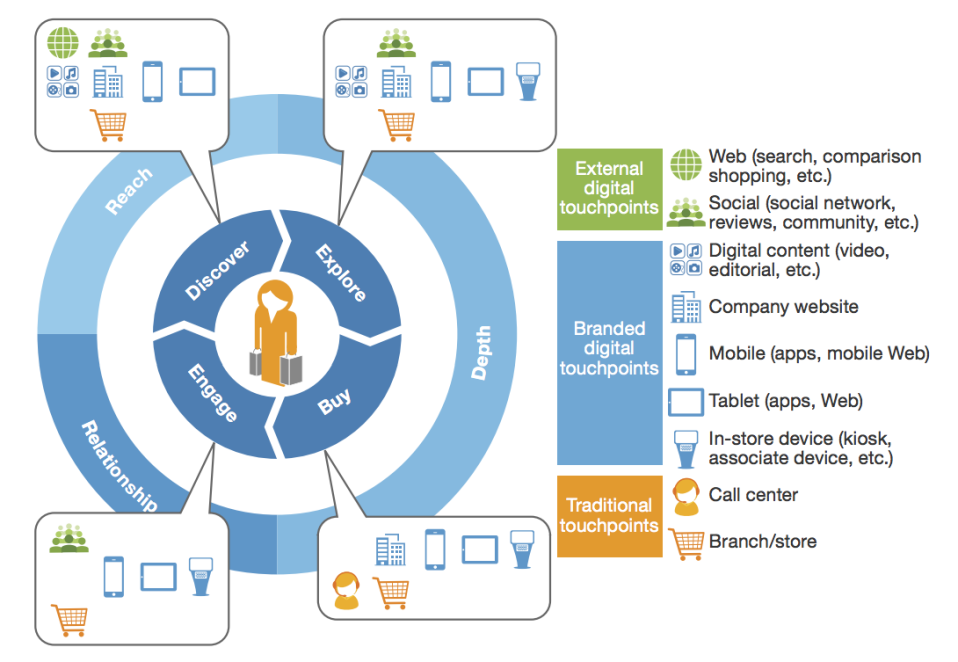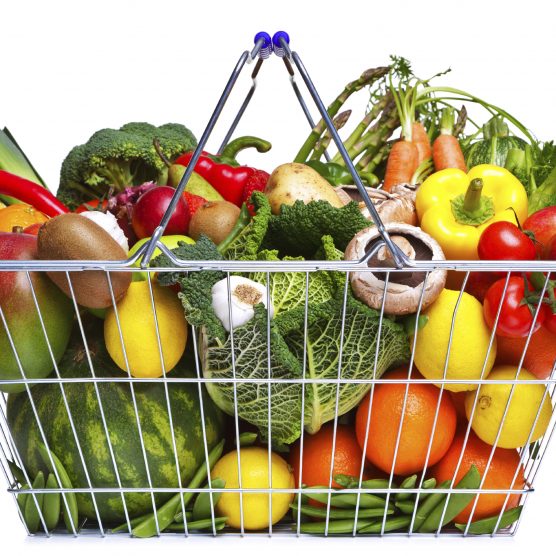How Omnichannel Retail Is Changing the Grocery Industry

Amazon’s acquisition of Whole Foods in June 2017 sent a shockwave through the grocery industry. What does it really mean for retailers in the grocery business?
The merger highlights the symbiotic relationship between online and physical stores. Consumers no longer consider them as two distinct experiences but two sides of the same coin that work together to provide a seamless service.
For most grocery retailers doing business at a physical location, the idea of adding an online component can be intimidating.
However, omnichannel retailing has become an essential strategy if you want to stay relevant and competitive in the market.
There’s no question that online shopping is rapidly gaining market share – 51% of Americans prefer to shop online while eCommerce is growing by 23% year-over-year.
Not to mention, consumers are demanding a seamless shopping experience between brick-and-mortar stores and digital channels so they can shop whenever they want, get the best price possible, and have the merchandise delivered to their doorsteps when they want it.
In a recent study of 46,000 shoppers published by Harvard Business Review, 73% of them use multiple channels during their shopping journey. In addition, these customers tend to be more loyal and spend more.
Within the context of the grocery industry, a survey conducted by Unata, 31% of US consumers are likely to shop for groceries online and 80% who have done so will do it again. Meanwhile, 68% who have shopped online are likely to switch to a grocer that provides a better digital experience.

Even though online grocery retail is gaining market share, there are some inherent challenge in the business model. eGrocers often face the challenge of missing out on attracting customers with a tactile, personal experience. They also need to address the “last mile” of distribution while staying profitable.
The convergence of online ordering and offline shopping is emerging as the solution, as Amazon’s acquisition of Whole Foods demonstrates.
This merger has solidified omnichannel retail as the strategy for grocery retailers who want to stay competitive and profitable.
Omnichannel retailing is a tantalizing opportunity for many grocery retailers, reinforced by the technology now available to create a seamless and personal customer experience without breaking the bank.
For instance, the logistics of same-day delivery is now economically feasible while the technology to deliver an omnichannel personalized shopping experience is available to retailers at an affordable cost.
An omnichannel strategy meets your customers’ demand for having the personal experience of shopping in a physical store while enjoying the convenience of managing their orders online and getting groceries delivered to their doorsteps when they need them.
To stay competitive and relevant, grocery retailers need to cater to their omnichannel customers. Here are a few key strategies to keep in mind:
- Offer Multiple Touch points: Omnichannel customers like using a variety of touchpoints in different locations and combinations. Every component – whether it’s a smartphone app, an in-store interactive catalog, or the retailer’s eCommerce website – has to deliver a coherent and seamless customer experience.

- Encourage Customers to Use More Channels: The Harvard Business Review study revealed that omnichannel customers are more valuable. They spent an average of 4% more in-store and 10% more online when compared to single-channel customers. In addition, customers who use 4 or more channels spent an average of 9% more in-store compared to those who use only one channel.
- Build Loyalty With Personalization: Online channel allows retailers to gain valuable insights into individual shopper’s preferences, habits, and personalities. To make the most out of this goldmine of data, use a Customer Data Management platform. This will allow you to construct 360° customer profiles based on real-time interactions across all channels so you can deliver the most timely and relevant services, information, and product recommendations to your customers to build relationships and increase sales.
As a grocery retailer in this digital era, you’re competing not only with local grocery stores but also national chain retailers.Implementing an omnichannel personalization strategy not only helps you better serve your customers and increase sales but also contributes to better inventory management, improved demand sensing, and streamlined customer support so you can stay competitive and profitable.





